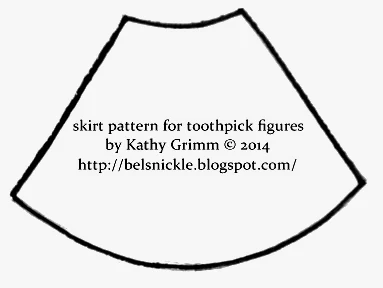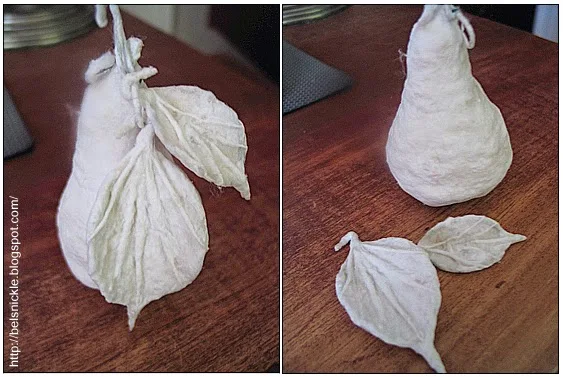Although you do not need a great deal of experience to craft a Nativity ornament like this, you will need an abundance of time. The stable alone will take several hours to construct and it must be allowed plenty of time to dry. It is an ideal craft project for fourth and fifth graders and the amount of time it takes to complete is dictated by the size of the box you select to use as your stable.
Supply List:
- stalks of wheat
- small cardboard box, about the size of a soap box
- both flat sided toothpicks and round toothpicks, natural, unstained colors
- decorative printed papers (very small designs, plain or striped)
- flesh colored acrylic paints
- cotton balls
- wire for hanger and shepherd's staffs
- white glue
- tacky glue
- wood glue
- small sized cupcake foil liner (gold)
- Choose a small box for a stable. I chose a soap box.
- Reinforce this box with masking tape and glue. Tape down all the flaps.
- Cut away one whole side of the box.
- I cut extra cardboard from another recycled cereal box to bend a narrow strip into the A shaped roof.
- I left the loft space above my stable open and also cut an additional rectangular window at the backside of this cardboard stable. (pictured below)
- Cover every surface of the box with masking tape and tape on a wire hook to the roof top for hanging as well.
- Now you are ready to start gluing flat sided toothpicks over the surface of your small cardboard stable. I cut my toothpicks with scissors to fit the sides of the stable in advance. This can be time consuming if you do not cut the toothpicks in groups of six or seven at once. Flat sided tooth picks are very fragile so this method of cutting is easier than you may think.
- Glue the toothpicks directly onto the masked surface with Elmer's wood glue. This type of glue will allow you to work quickly. Decide in advance which direction your tooth picks should be glued.
- I chose to glue heads of wheat to the surface of my loft floor and also to trim the outside of the box with as well.
- I bent a singular wheat grass stem into a star shape and twisted thin pieces of cotton around the star points to hold it into place. I then glued the star to my ornaments hook.
- Let your stable dry completely over night. Now you are ready to fashion the Nativity characters from the round-sided toothpicks.
 |
| Above is the little soap box that I covered with masking tape for this Nativity craft. |
 |
| Adjust this little paper pattern to fit your own toothpick figures. |
- Depending upon the size of your stable, you may need to trim away a bit of the height of your figures. When I made my figure of Mary, I cut away half of the toothpick's length so that she would look as though she were knelling beside the manger of Jesus. I used only one small end of a toothpick to craft the baby with. (shown below)
- Hold two round toothpicks together between your finger tips. Put a bit of glue on top of the spiked tips and wrap a fine bit of cotton batting around the two toothpicks to shape all of the figure's heads.
- Add also a little glue down the length of the toothpicks where they share a common side. Set these little shapes aside to dry.
- I then painted my figures heads a tannish color with acrylic paints and let them dry again.
- As you can see from the photographs below, the clothing on the tiny angel was made by: cutting out tiny templates, tracing around these on top of my selected decorative paper and then cutting these to fit my toothpick figure.
- First wrap the paper around the neck of each figure to measure it's proper length. Trim off enough of your cone shaped cloak so that the bottom edge of the figure's gown is level to the stable's floor. In the case of my angel, I clipped off enough paper to expose her feet. She was to be floating above the stall and I wanted to expose the toothpick stubs for preference sake.
- Next you will use one round-sided toothpick to shape the adult figure's arms. Twist a cone shaped sleeve to fit this single toothpick. Add a bit of glue between the paper sleeve and the single tooth pick as you twist it into place. Clip off the toothpick end to finish the arm. Make two and glue these to opposite sides of your figures.
- I dabbed a bit of glue to the top of my angel's head to add a cotton batting halo.
- For my shepherds, I dabbed glue to the top and backsides of their heads and also underneath their chins. Then I wrapped small pieces of cotton batting around their heads to imitate the head covering most commonly worn by Bible characters often portrayed in the Nativity. The baby Jesus was wrapped entirely with cotton batting to imply swaddling.
- Then I bent a couple of wire stems, covered in cotton batting, into shepherd's crooks.
- The angel figure was given an additional trim. I shaped a small, gold cupcake liner into a halo and/or wings and glued this piece to her back before gluing her onto my stable vignette.
More Toothpick Crafts:


























